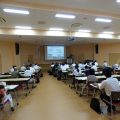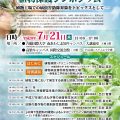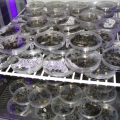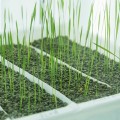Management of Scab Disease on Japanese Pear
Hideo Ishii
Kibi International University, Minami-awaji, 656-0484, Japan
Scab, caused by the Ascomycete pathogen Venturia nashicola, is the most important disease of Japanese pear. The most popular pear cultivar (cv.) ‘Kousui’ is resistant to black spot disease (pathogen: Alternaria alternata Japanese pear pathotype) but highly susceptible to scab. Since scab-resistant commercial cultivars are very few, frequent spray application of fungicides is required for the control of this disease. As a result, the isolates of V. nashicola resistant to benzimidazole as well as sterol demethylation inhibitor (DMI) fungicides have been selected and widely distributed in the fungal populations. Testing DMI sensitivity based on mycelial growth on fungicide-amended culture medium is not always suitable in this fungus so resistance is generally assessed by inoculation tests conducted on potted pear trees sprayed with fungicides. Various mutations have been found in CYP51 gene from resistant isolates which encodes the fungicide-targeting sterol demethylase. However, as other mechanisms, e.g. overexpression of CYP51 gene, will also be involved in DMI resistance, development of molecular diagnostic methods seems to be difficult for the time being. Under such circumstances of chemical disease control, multiple disease resistance is becoming one of the current breeding objectives in Japanese pear. A new pear cv. ‘Yutaka’ was bred by Yutaka Kimura after the cross of scab-resistant Chinese pear cv. ‘Hongli’ with the susceptible Japanese pear cv. ‘Housui’. This interspecific cv. ‘Yutaka’ was shown to be highly resistant to both scab and black spot diseases in inoculation tests. More recently, some other cultivars such as ‘Risui’ and ‘Akihime’ have been bred by Sigeru Tanaka and these cultivars also showed resistance to scab and black spot. Acibenzolar-S-methyl (ASM), one of the well-known disease resistance inducers, is effective against scab in pear orchards so the introduction of ASM in combination with disease-resistant pear cultivars will contribute to establishing the integrated management of two major diseases and lowering the risk for pathogen development of fungicide resistance in the future.











